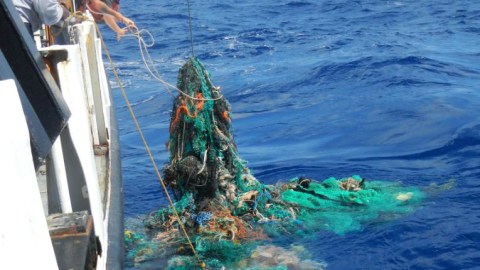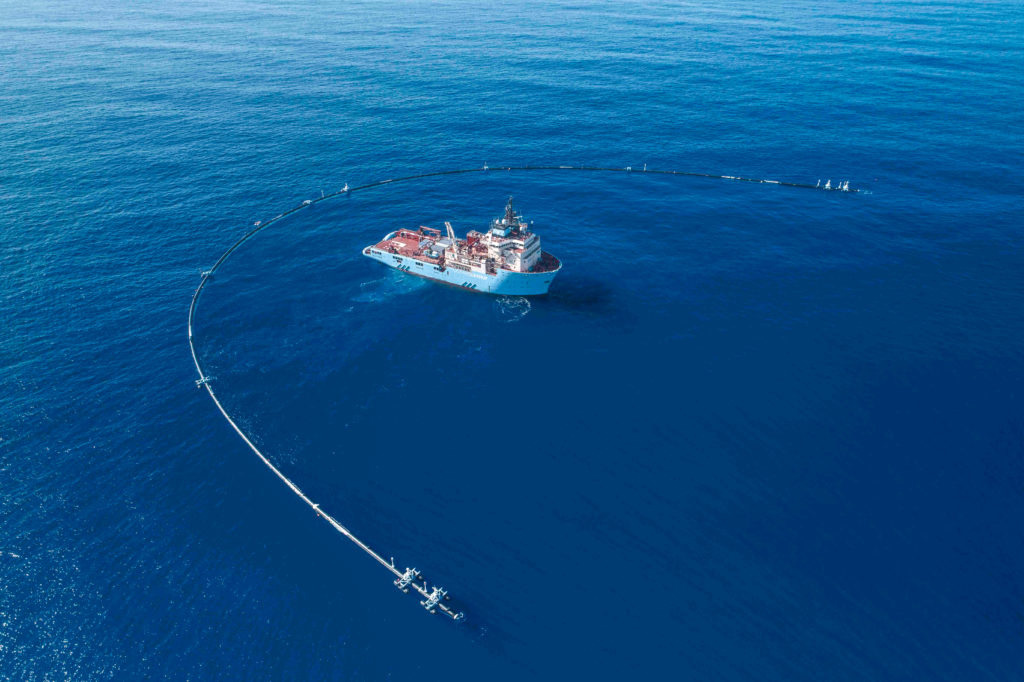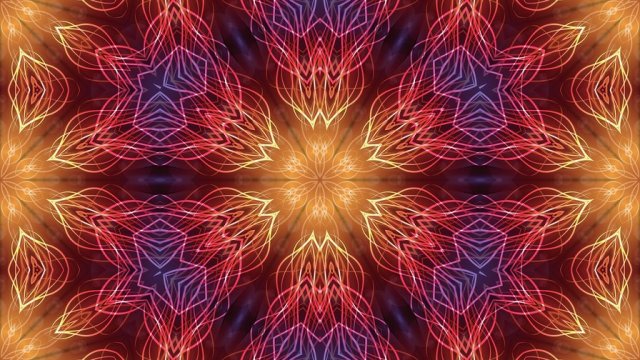Great Pacific Garbage Patch is now three times the size of France, research suggests

Where does a plastic straw go after someone litters it on the sidewalk?
Often, that piece of plastic will make its way down a storm drain, then into a creek, a river, and finally into the ocean where, in many cases, currents carry it to where billions of other plastic pieces end up: the Great Pacific Garbage Patch, an area of concentrated trash between California and Hawaii that spans three times the size of France.
The garbage patch was first discovered in 1997 when oceanographer Charles Moore and his crew sailed through it in one of the most remote regions of the Pacific Ocean.
“It seemed unbelievable,” Moore wrote in Natural History. “But I never found a clear spot. In the week it took to cross the subtropical high, no matter what time of day I looked, plastic debris was floating everywhere: bottles, bottle caps, wrappers, fragments.”
A three-year study published Friday in Science Reports shows that the Great Pacific Garbage Patch is larger, growing faster, and has different characteristics than researchers previously thought. Most notably, the results showed that the patch takes up about 1 million square miles – four to sixteen times larger than previous estimates. Worse, it appears to be growing exponentially.
Everything there is to know about our new research on the Great Pacific Garbage Patch, in 1 minute. Learn more on https://t.co/eWQgxo4ZLPpic.twitter.com/J1gRHdJmKb
— The Ocean Cleanup (@TheOceanCleanup) March 22, 2018
The study, which was conducted by The Ocean Cleanup Foundation, six universities, and an aerial sensor company, used aircraft surveys and 30 ships to study the size and characteristics of the garbage patch. They collected a total of 1.2 million plastic samples and scanned about 186,000 square miles of ocean surface.
The plastic samples they collected were diverse. A total of 50 items had readable production dates, ranging from the 1970s to 2010, and 386 items contained readable words in nine different languages: one third Chinese, one third Japanese, and the rest spread across other languages.
The researchers think that almost half of the 80,000 metric tons of garbage came from discarded fishing nets, while 20 percent was debris from the 2011 tsunami in Japan. Microplastics, defined as those between 0.05–0.5 cm, made up 8 percent of the mass.
“We were surprised by the amount of large plastic objects we encountered," Chief Scientist Julia Reisser said in a statement. “We used to think most of the debris consists of small fragments, but this new analysis shines a new light on the scope of the debris."
Trash enters the ocean in a variety of ways: storm drains, litter on beaches, improper or illegal trash disposal, waste from ships, lost or discarded fishing gear, and debris that's carried into the ocean during natural disasters.
Large plastic items discarded into the ocean can break down into microplastics, posing a threat to marine life, which can mistake plastic fragments for food. But debris of all sizes poses hazards for the world's ocean life.
Map of the GPGP used in the study
The Ocean Cleanup Foundation has plans to start reducing the garbage patch in 2018 with large floating structures that it says could remove about half of the garbage within five years. Still, not everyone is convinced the plan is feasible.
Either way, there's steps everyone can take to slow the growth of the Great Pacific Garbage Patch.
“Plastic pollution in the ocean is visible and trackable," Britta Denise Hardesty, a principal research scientist for the Commonwealth Scientific and Industrial Research Organisation in Australia, told CNN. “We can definitely make a difference in how we vote with our pocketbook and think about each decision we make, whether we take our own bags to the supermarkets, refuse straws, bring our own coffee cups, accept single-use items or think about mindful alternatives."




